From Buzzwords to Action: Navigating Continuous DEI Improvement in 2023
today2023.07.15. 3743

WHY SHOULD YOU CARE?
Discover how redefining diversity, equity, and inclusion (DEI) can propel your organization to new heights of success. In this thought-provoking article, we explore the power of belonging, building inclusive cultures, and leveraging technology innovations to create a competitive advantage. Learn how HR professionals play a pivotal role as champions of DEI and how measuring success and effective communication are vital for long-term sustainability. Don’t miss this insightful guide to navigating the ever-changing DEI landscape and creating a better future for your organization and its employees.
The concept of diversity equity and inclusion (DEI), in today’s constantly changing business landscape, has changed significantly over the past few years. In the year, companies must explore new ways to foster a truly inclusive workplace. This article explores the many facets of DEI. We examine the importance of “belonging,” discuss strategies to create a culture of inclusion, explore the transition between DEI programs and continuous improvement, discuss HR professionals’ role in language and training, analyze the effectiveness of DEI initiatives, and explore technological innovations that can elevate DEI.
Determining DEI at Workplace in 2023
In 2023, workplace diversity, equity, and inclusion (DEI), has moved beyond traditional quotas and representation. Although increasing diversity of gender, race, and ethnicity is still important, companies are now recognizing the importance of welcoming individuals with diverse backgrounds, identities, and experiences.
The expanded definition of DEI recognizes intersectionality as a concept, where individuals have multiple identities socially that influence and intersect each other. Intersectionality includes a variety of factors, including race, gender, and sexual orientation. It also encompasses age, socioeconomic background, disability, and other factors. Companies can create an inclusive environment by valuing and acknowledging the complexity of individual identities.
By embracing a broader range of perspectives, organizations can reap a number of benefits. Diverse teams foster innovation and creativity by bringing together diverse experiences, skills, and knowledge. People with different backgrounds and experiences can offer new insights and ways of solving problems. This leads to more robust solutions.
Diverse teams also improve the decision-making process. Diverse groups have been shown to be more open to a wider range of perspectives, more willing and able than others, to challenge assumptions and make more informed and balanced decisions. This diversity of thinking helps organizations avoid groupthink and makes better choices that resonate well with diverse customer bases.
Diversity has many benefits for business, but it also promotes equality and social justice. By creating a welcoming environment for people from all walks, organizations can help to dismantle systemic barriers. They also provide opportunities to underrepresented groups. This creates a just and fair society and is an example that other businesses can follow.
However, to fully implement DEI practices does require organizations to move from performative towards truly authentic DEI. In a 2020 report from McKinsey, one HR director stated, “A disconnect between what the company says and the progress it is making on the ground can seriously erode credibility both inside and outside of the organization, and further contribute to a lack of experienced inclusion.”
Therefore, in order to operationalize the expanded definition of DEI companies must implement comprehensive strategies which go beyond a superficial level of representation.
It includes adopting inclusive hiring practices that attract diverse talents, implementing equitable practices and policies throughout the employee’s life cycle, and creating an environment that values and respects different perspectives.
The Power of Belonging
The concept of belonging has become a key component of creating truly inclusive workplaces. Although efforts to promote equality and diversity have been essential, the focus is now on fostering a feeling of belonging among employees. Belonging at the workplace also serves as the foundation for employee engagement by creating an environment where individuals feel a deep sense of acceptance, connection, and value. When employees feel a strong sense of belonging, they are more likely to be fully engaged and committed to their work and the organization.
Belonging is more than just diversity on the surface. It’s about creating an environment in which people feel accepted, connected, and valued. It is about cultivating an environment that values and actively seeks out diverse perspectives, identities, and experiences. Employees who feel like they belong are more engaged, motivated, and committed to the work of their organization and themselves.
Companies must be proactive in nurturing an inclusive culture to embrace the power of belonging. It is important to create an environment in which people can be themselves at work, without being judged or excluded. This means creating spaces that encourage open dialogue, actively listening, and valuing all employees’ contributions, no matter their background.
In Wharton’s Evidence-Based Diversity, Equity and Inclusion Practices research it has been identified, that there are three DEI practices that help improve a sense of belonging: Managerial Involvement, Workplace Policies, and Mentoring and Sponsorship. “Managers can strive to create an environment where all employees feel they can contribute and help the team achieve its goals. This has become increasingly important as remote work becomes the norm and managers are challenged to find new ways to engage employees.”
To foster a feeling of belonging, it is important to ensure that there are diverse representations at all levels within the organization. This includes leadership positions as people who are similar to them are more likely to feel valued and heard when they see others in authority. Mentoring and sponsorship programs are also great ways to support underrepresented employees and help them feel like they belong.
Employee Resource Groups (ERGs), which are groups of employees who share common interests, can play an important role in creating a sense of belonging. These groups offer employees a place to share their experiences, connect with each other, and celebrate who they are. ERGs provide opportunities for professional development, networking, and community involvement, all of which help to create a sense of belonging in the workplace.
A second important factor in fostering belonging is to provide opportunities for growth. Organizations should provide training and education programs that address issues such as bias, cultural competency, and inclusive leadership. Companies that invest in the advancement of their employees show their commitment to creating a culture where everyone can flourish.
To embrace the power of belonging, organizations must recognize and address systemic biases and barriers that can prevent certain groups from feeling like they are included. In order to do this, organizations must assess their policies and practices and the decision-making process through an equity lens. This will identify and correct any disparities.
Organizations that place a high priority on belonging are better able to retain and attract top talent, improve employee satisfaction and well-being, and cultivate a culture of success and inclusivity.
Stand Out Through Cultural Transformation
Organizations are realizing, in today’s competitive business environment, that DEI, is not only a moral imperative but also a strategy advantage. For companies to truly differentiate themselves from their competitors, they must embrace and promote DEI principles.
Cultural transformation is a holistic process that creates an environment in which people of all backgrounds are valued, respected and included. This transformation begins with the development of inclusive policies and practices to ensure fairness and equality for all employees. This means eliminating bias in recruitment and promotion, implementing measures to ensure pay equity, and creating robust mechanisms for addressing and preventing discrimination and harassment.
In addition, to foster a culture of DEI, an ongoing commitment is required for open dialogue and education on DEI-related issues. Organizations should encourage discussions that promote understanding, and empathy, and raise awareness about unconscious biases. Town hall meetings, employee resources groups, diversity programs, and initiatives to encourage cross-cultural learning and collaboration can help achieve this.
A culture that emphasizes DEI is also more likely to resonate with employees. Individuals are more engaged, motivated, and committed to work when they feel their unique perspectives and identities are valued. This improved employee experience leads to higher retention rates, and a positive working environment that encourages collaboration and innovation.
A culture that is DEI-friendly also improves the reputation of a brand and employer brand. Consumers, clients, and prospective employees, especially the younger generation today are more socially aware, giving priority to businesses that share their values. Organizations that show a real commitment to DEI gain not only a competitive advantage but also a loyal client and future talent base.
Leadership is crucial to driving cultural transformation. Executives and managers need to champion DEI initiatives and lead by example. They also have to be accountable for creating a culture of inclusion. It is important that leaders continue to develop their cultural intelligence to be able to create diverse and inclusive teams.
The Transition to Continuous DEI
On the road to diversity, equity, and inclusion, organizations must be prepared to move from one-off projects to a continuous improvement mindset. DEI programs played an important role in raising awareness of the importance of DEI and initiating changes. However, to achieve sustainable progress, it is necessary to integrate DEI principles throughout the organization.
For organizations to achieve continuous DEI improvements, they must move beyond the surface-level diversity efforts. They should adopt a holistic perspective, whereby everyone’s voice is heard.
As a recent MIT Sloan study found: “What is necessary beyond a seat at the table is the opportunity for employee voices to truly impact team and organizational decisions, also known as shared impact.”
Organizations must cultivate practices of inclusive leadership, giving leaders the tools to foster environments that value diversity and foster a feeling of belonging. Organizations can inspire change by ensuring leadership practices embody and promote DEI principles.
Continuous improvement in DEI is all about constantly learning and adapting. Companies need to regularly assess their DEI efforts, gather and analyze data, and track progress against specific goals. Data analytics can help spot areas for improvement, monitor how underrepresented groups are represented and treated, and make decisions that are fair and inclusive.
To keep up with the ever-changing landscape of DEI, organizations must stay informed about new research, best practices, and legal requirements. It’s important to engage employees regularly through feedback sessions, focus groups, or surveys to gain insights into their experiences and identify areas that need improvement.
Making DEI a part of an organization’s DNA requires a cultural shift, which means effective communication and accountability. Leaders need to clearly communicate the importance and vision of DEI, and ensure that all employees understand their role in driving the change. Setting DEI targets tied to performance reviews and sharing progress transparently can demonstrate the organization’s commitment to continuous improvement.
HR Professionals as Champions of DEI
HR professionals are the driving force behind DEI efforts. They play a crucial role in fostering an inclusive culture and ensuring the long-term success of DEI initiatives.
Training and education are key responsibilities of HR professionals in promoting DEI. Through training programs, they raise awareness about unconscious biases, promote understanding of different cultures and perspectives, and equip employees with inclusive communication and collaboration skills.
Creating a safe space for open dialogue is equally important. HR encourages employees to have open discussions about DEI topics, navigate sensitive issues, and challenge assumptions. Employee resource groups, diversity panels, and town hall meetings serve as platforms for these conversations.
Integrating DEI considerations into key HR processes is vital. HR leaders ensure that DEI principles are embedded in recruitment, training, and performance evaluation. They strive to make promotion criteria fair, unbiased and provide equal growth opportunities. Performance evaluations also consider inclusive behaviors, teamwork, and collaboration.
However, it is crucial to strike a balance and uphold meritocracy. DEI programs can backfire if promotion decisions solely prioritize diversity over merit. While promoting diversity and inclusion is important, it should not undermine the credibility and effectiveness of the program.
HR professionals can make DEI an integral part of their organization’s culture by integrating it into all HR processes. They align policies and practices with DEI goals, establish metrics to track progress, and regularly review and update initiatives based on feedback.
HR professionals are pivotal in driving DEI efforts and creating an inclusive workplace culture. Through training, open dialogue, and integrating DEI into HR processes, they ensure that DEI becomes an integral part of the organization’s DNA. By striking a balance between diversity and merit, HR professionals can foster an inclusive culture that benefits both employees and the organization as a whole.
Measuring success
It is important to measure the success of DEI efforts in order to ensure their effectiveness and identify areas for improvement. HR executives are key in implementing strategies to measure the impact of DEI initiatives. As Silke Munster, Chief Diversity Officer of Philip Morris International explained: “Fostering a diverse and inclusive workforce is a key component for building a creative, innovative, and resilient organization. However, a diverse employee population is just one important building block of inclusivity. It also takes time, resources, and, above all, an acknowledgment and deep understanding of the areas of improvement needed to reach that goal.”
When it comes to measuring the success of DEI initiatives, HR leaders can rely on their trusty people analytics team. With a combination of quantitative and qualitative metrics, people analytics empowers organizations to assess the impact of their DEI efforts and make informed decisions.
Tracking Diversity Metrics: People analytics enables organizations to keep tabs on diversity metrics, identifying any gaps or imbalances. By measuring representation across different demographic groups, organizations can pinpoint areas that need improvement and set goals to increase diversity at all levels.
Employee Engagement and Experience: Engagement surveys and feedback mechanisms are goldmines of insights into employee experiences and levels of engagement. People analytics helps gauge how engaged employees from diverse backgrounds feel within the organization, identify potential roadblocks, and track progress over time. This valuable data guide interventions to boost engagement and ensure inclusivity.
Performance and Promotions: Analytics can shine a light on the connection between DEI and individual or team performance. By analyzing performance evaluations and promotion rates across demographic groups, organizations can spot any biases and take corrective actions. This data-driven approach paves the way for fair opportunities and equal advancement prospects.
Employee Journey Analysis: Digging into the employee journey, from recruitment to retention, people analytics uncovers potential biases or barriers that hinder inclusivity. This allows organizations to identify patterns and trends, enabling them to implement targeted interventions for an enhanced overall employee experience.
Return on Investment (ROI): People analytics goes beyond mere insights and delves into the financial impact of DEI initiatives. By examining metrics like revenue, profitability, and customer satisfaction alongside diversity metrics, organizations gain a clearer understanding of the correlation between DEI and business outcomes. This demonstrates the return on investment for their commitment to DEI.
HR leaders can harness the power of people analytics to measure the success of their DEI initiatives. By tracking diversity metrics, gauging engagement levels, analyzing performance and promotions, exploring the employee journey, and considering ROI, organizations can make data-driven decisions that promote inclusivity and drive sustainable success. With people analytics by their side, HR leaders are equipped with the insights needed to create a diverse, equitable, and inclusive workplace.
Communication of DEI for success
Effective communication of DEI progress, in addition to measuring it, is crucial. To build trust and credibility with employees, it is important to be transparent and open in the way you share your organization’s DEI journey. HR executives must provide regular updates about the organization’s DEI initiative, share data and insight, and communicate steps taken to overcome identified challenges.
Share success stories to demonstrate the tangible benefits that DEI initiatives can bring. Motivate and inspire employees by highlighting how DEI positively impacts individuals, teams, and the entire organization. HR executives can show the importance and value of DEI by showcasing the results of DEI initiatives.
However, it’s critical to ensure the voice of the employee, effective communication is a two-way street. Therefore, similarly, it is important to discuss challenges and setbacks in an open manner. DEI initiatives do not come without challenges. Acknowledging and addressing them demonstrates your commitment to continuous improvement. HR executives need to create an environment where employees are comfortable voicing concerns and providing feedback about DEI initiatives. Organizations can create a culture of accountability and trust by actively listening to employees, engaging in dialogue, and taking action to address their concerns.
Last but not least, communication is also important in cascading DEI progress and goals throughout the organization. Senior leadership should work with HR executives to integrate DEI into the organization’s strategic communication. You can do this by incorporating DEI information into town hall meetings or internal newsletters that are sent to all employees. Integrating DEI communications with wider organizational messaging allows HR professionals to reinforce DEI’s importance and ensure its visibility throughout the organization.
DEI Innovations: New Technology:
Technological innovations can be powerful tools in the pursuit of DEI. They can help to take these efforts to a new level. These innovations provide opportunities to identify and eliminate biases, encourage fair evaluations, enhance DEI education in organizations, etc.
Data analytics can be a powerful technology that supports DEI initiatives. Data analytics can be used by companies to identify biases in their recruitment process and analyze it. HR professionals can identify biases in the selection of candidates by examining trends and patterns. These insights allow organizations to make informed decisions, implement strategies and minimize bias in order to ensure a fair hiring process.
Artificial Intelligence has emerged as an important technology for promoting DEI. AI-powered tools are able to minimize unconscious biases when screening candidates. These tools can focus only on relevant skills, qualifications, and experiences, while removing identifying data such as names or photographs that could trigger biases. AI-powered tools can help reduce unconscious bias by ensuring that candidates are assessed on merit.
Virtual reality (VR), another innovative technology, can be used to enhance DEI training within organizations. VR simulations immerse employees into realistic scenarios that simulate workplace experiences and interactions. This immersive experience builds empathy and understanding in employees and allows them to appreciate diverse perspectives and experiences. VR training can promote a more inclusive environment by encouraging empathy and reducing prejudice, which will lead to more inclusive interactions and behaviors.
In 2023, workplace DEI will no longer be a buzzword. It will become an integral part of any thriving organization. Companies that embrace the power of belonging and build inclusive cultures while fostering continuous improvements, will be able to stand out among their competitors. HR professionals are key in championing DEI initiatives, ensuring that they are integrated into the DNA of the company and driving long-term business success. Prioritizing diversity equity and inclusion allows organizations to unlock the potential of their employees and create a brighter future for everyone.

Written by: Mihaly Nagy
Culture DEI DIversity Equity Inclusion Employee Experience Future of Work HR Strategy
Previous post

- 104
labelArticles today2023.07.13.
Unlocking the Culture Advantage: Strategies for Creating a Thriving and Innovative Workplace
WHY SHOULD YOU CARE? Discover the secrets to building a performance-driven culture that unlocks the full potential of your employees. Dive into insights from industry leaders, such as Banco Santander’s [...]
Similar posts

labelArticles today2024.07.24.
AI-Powered HR: Strategic Benefits and Practical Applications

labelArticles today2024.06.24.








Post comments (0)